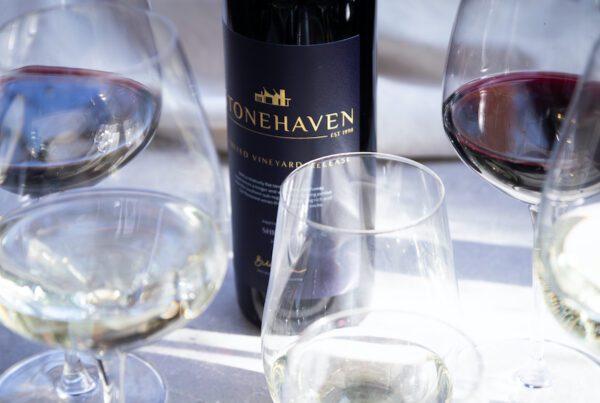
Marketing guru Mark Ritson swears by strategy before tactics. And he says if that brand or product is not working, do your job: kill it off.
As an industry where many of us in ‘sales and marketing’ have little if any formal qualifications in either, it is just good sense to take opportunities to understand marketing theory to better inform our practice. Mark Ritson, Melbourne Business School’s Adjunct Professor of Marketing, (and the world’s sweariest marketing professor) has a reputation for both calling out the bullshit, and cutting through it.
Lucky there’s plenty of it to go around in the marketing game, let alone the wine biz.
I’ve read a fair bit of Ritson’s work over the last 12 months, and I had a chance to see him in person when he swore recently in Adelaide. The good news about Ritson for those of us marketing wine is that there is plenty of his material available free online, and that some of his messages are very relevant to our wine businesses.
Based on some of that content, I’ve focused on a few of Ritson’s favourite themes, (see https://www.marketingweek.com/focus/mark-ritson/ for more) and applied some of the key points to our industry.
Strategy comes before tactics
Perhaps the most fundamental mistake that Ritson rails against is marketers putting tactics before strategy. Under strategy are questions like “Where will we play?” and “How will we win?” We might play in certain channels, at certain price points, in certain categories; for example high-end on-premise, at $70-$100 on a wine list, and pinot noir. Only then can we start to think about tactics that are going to deliver success – in this case some of the tactics might include minimising exposure in the chains, getting third party endorsement, targeting key influencer accounts, reviewing the packaging, developing the relationship with the buyers through tastings, lunches, visits to the winery, and so on. But the point is that the tactics need to follow strategy, and not go off on their own expensive journey before the strategic direction has been set. If we show the wrong wine to the wrong account, not only does it waste around $110 (the estimated cost one of my mates in distribution puts a sales call at) but it also undermines the rep’s credibility. Never waste a buyer’s time.
Kill off brands (and products)
Ritson prides himself on ruthlessness when it comes to killing off brands. This article http://bit.ly/2z6si1H gives some background as to why. In the wine business, it is a bit trickier. Not for the Treasuries who have plenty of surplus time-wasting brands that are easy to cull, but for smaller companies where brands, or even products, need to the pruned from time to time. What makes it hard is the emotional involvement, the sticks in the ground, the sunk costs. Even when the market is telling us that it’s over, we often delay it at great cost to our sanity and to the other parts of our businesses that are healthy. And don’t forget that “when you kill brands you must ignore sales and look instead at profits and future potential”. Ignore sales. That may be the hardest part, but in our industry with its track record for profitless prosperity, it might be the most important.
Digital marketing is simply marketing
The key point here from Ritson is that pretty much everything is digital, so there is no meaningful or useful distinction between ‘non-digital’ and ‘digital’ marketing. We are as prone to over-enthusiasm in the wine industry as any other when it comes to shiny new toys. Instagram, Twitter, YouTube and Facebook are full of wineries posting, blogging, vlogging and advertising. In itself, there’s nothing wrong with that. The problem comes when we do those things for their own sake, rather than as part of a strategy. Why are we on Instragram? Who are we talking to and what is the point of the conversation? What are we hoping to achieve? And is it contributing to execution of our strategy? If we can’t answer these questions, we are probably wasting our time on the medium.
Be channel neutral
For Ritson and marketers working for big brands, this is about not pre-judging whether money and effort should go to channels like Facebook, Google, TV or outdoor advertising. For most of us, when we look at our marketing spend, it is on things like distributor tastings, consumer tastings and dinners, wine show entries, maybe some magazine advertising. The message here, linked to another of Ritson’s pet themes – zero base advertising – is to avoid inertia with marketing budgets and activity. Do we allocate five percent of revenue to the same activities each year, without testing whether a) they deliver results or b) they align with our strategy? Is our strategy to grow direct consumers in NSW or by the glass listings in Singapore?
We are the worst people to judge our own brands
The message here is about getting feedback from customers. We’re both really well placed to do this in the wine business because we have loads of opportunities to engage with customers at tastings and at our cellar doors, but we’re also, I think, always in danger of ranking our customers according to the level of expertise that we assign to them. When we talk to two customers, and one is a wine enthusiast and collector with lots of knowledge, we take more notice of what they have to say, and we may also get confirmation bias because a fellow wine enthusiast will more likely have views that match our own. The other customer, who buys just as much but is not an enthusiast, we’re less likely to take as much notice of. So even though we are getting feedback from customers, there’s a real danger that we filter it and get a skewed view of what our customers think about our wine, and why they buy.
If we have a successful brand, it is likely that wine enthusiasts will make up a smaller percentage of the brand’s buyers, so listening just to them could take us further away from the truth about what our customers think of our products, and why they buy them.
Complicating the issue for many of us is that we have three sets of customers – end consumers, trade buyers and sales reps. Our products are doing different things for each of those groups, so we need to get feedback from each of them to understand what’s going on in the market. What we ideally should get and use is some qualitative and quantitative data about our brands and products – a subject all of its own – and one that Ritson implores marketers to understand. Most of all, he wants us to be serious about good marketing, not be lazy, and do our f***ing jobs!
• This article was first published in the November/December issue of WBM – Australia’s Wine Business Magazine. David LeMire MW is a regular contributor. To subscribe visit www.wbmonline.com.au/shop









Recent Comments